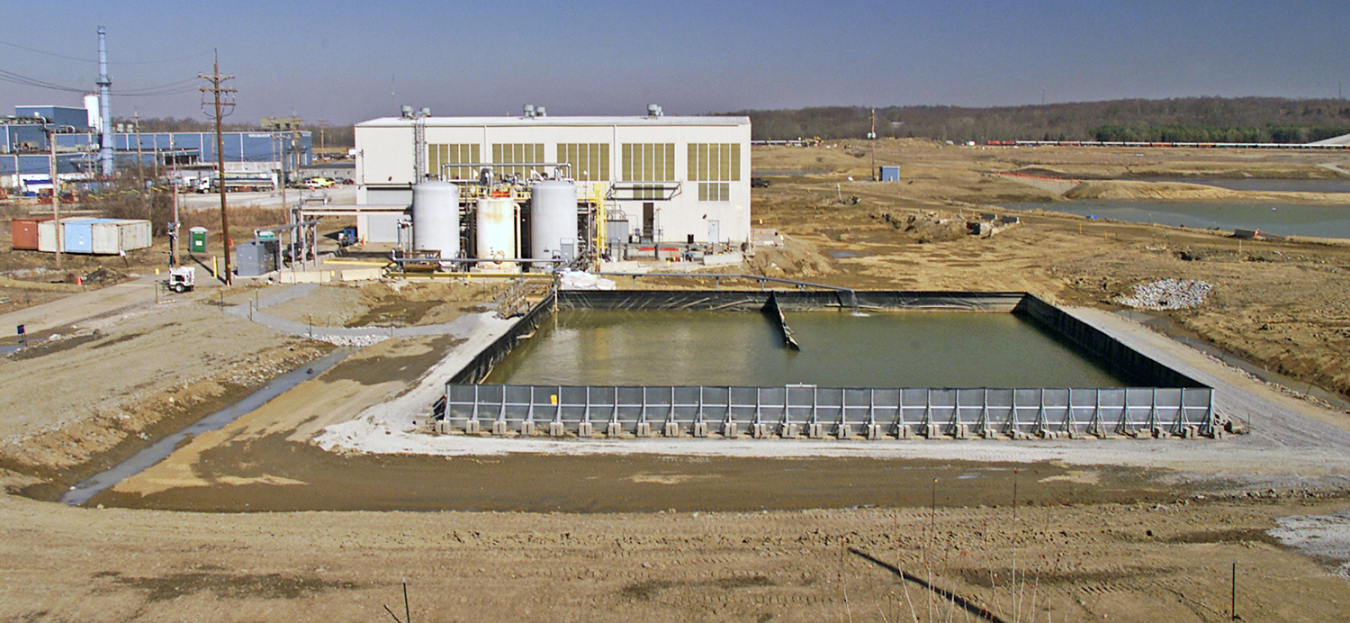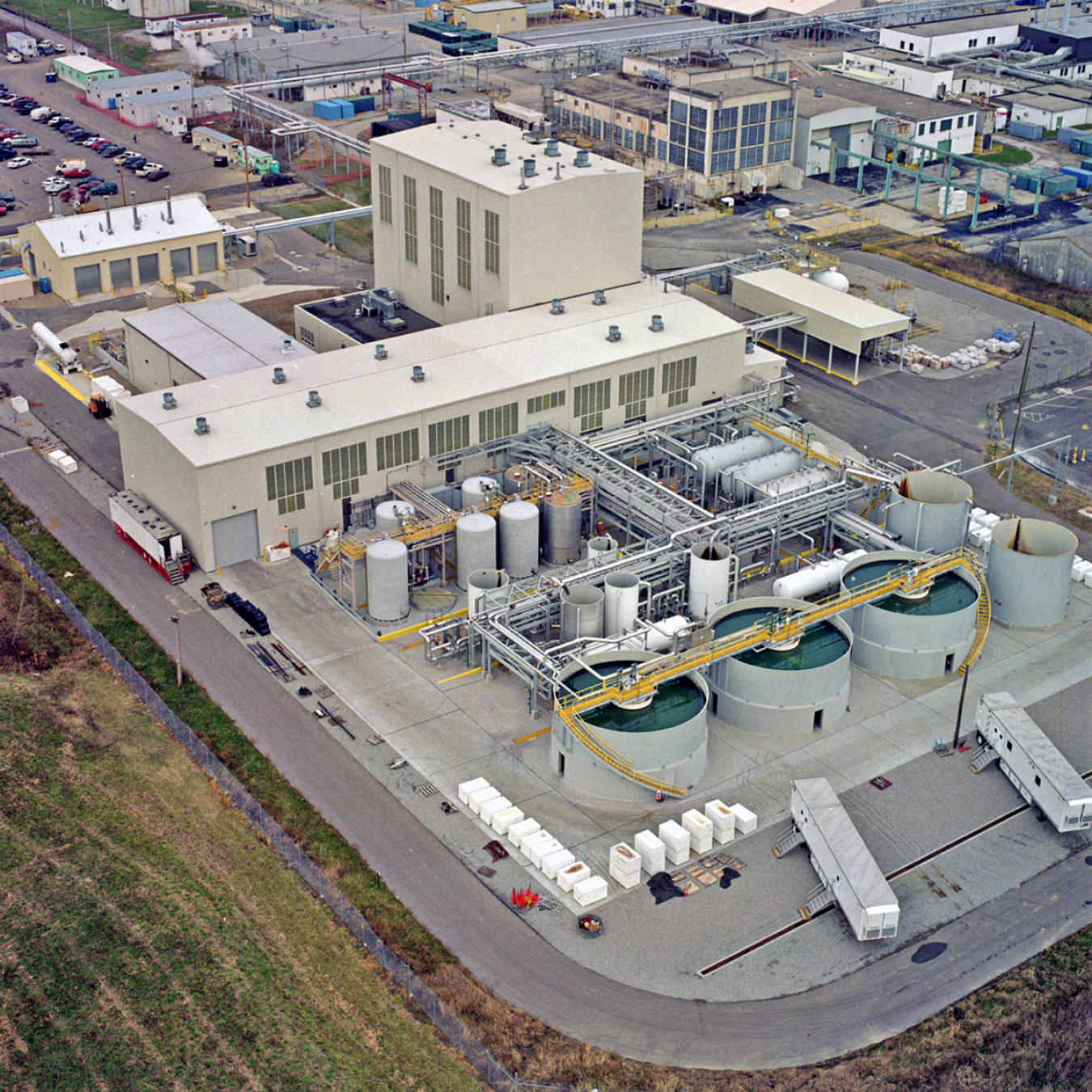Industrial wastewater treatment at the Fernald Preserve in Ohio has been ongoing since a uranium metals refinery was constructed at the site in 1951.
April 19, 2017
Converted Advanced Wastewater Treatment facility, 2006.
Industrial wastewater treatment at the Fernald Preserve in Ohio has been ongoing since a uranium metals refinery was constructed at the site in 1951, at the beginning of the Cold War. Later, when cleanup of the site was progressing in the 1990s, wastewater treatment efforts were exponentially increased and large treatment facilities were constructed to handle contaminated surface water, groundwater, remediation wastewater, and leachate from the On-Site Disposal Facility. The centerpiece of these facilities was the Advanced Wastewater Treatment facility (AWWT), which had a design treatment capacity of 2,900 gallons per minute (GPM).

Advanced Wastewater Treatment facility, 1996.
In 2003, with the major portions of the site’s remediation forecasted to be completed in 2006, U.S. Department of Energy (DOE) Office of Environmental Management began negotiations with the U.S. Environmental Protection Agency and Ohio Environmental Protection Agency for a reduced wastewater treatment capacity. A smaller system was sufficient to handle the site’s remaining wastewater treatment needs (mainly groundwater) when the site was turned over to the DOE Office of Legacy Management (LM) in 2006. Negotiations resulted in the site’s treatment capacity being reduced to 1,800 GPM via the Converted Advanced Wastewater Treatment facility (CAWWT).
By 2010, with aquifer restoration pumping efforts yielding in excess of 2 billion gallons per year, the uranium concentration in the groundwater being pumped had been reduced to the degree that treatment for uranium removal was only needed intermittently and the CAWWT was considerably oversized. Increasing maintenance of the aging CAWWT equipment led LM to commission a condition assessment of the facility, which was completed in early 2015. The assessment identified numerous components at or near the end of their design life. With the results of the assessment in hand, and the fact that the facility treatment capacity was substantially more than needed, LM began looking at options for a new right-sized treatment system to handle the site’s needs until groundwater remediation is completed—currently projected for 2039.

CAWWT interior before (October 2016) and after (January 2017) tank removal to provide room for the new, smaller treatment system.
Options were evaluated in spring 2015, and LM presented the recommended changes to regulators and stakeholders. Approvals for a new, smaller system with a 50 GPM capacity were obtained through a series of meetings in the summer of 2015. After more detailed planning during fall 2015, LM initiated the project in 2016. The project is comprises of the following phases.
- Removal and disposal of used media, piping, and tanks to make room for the new systemin the existing building
- Design of the new system
- Construction, installation, and start-up of the new system
The media removal and decontamination and demolition work was completed in January 2017. The design of the new system is anticipated to be finalized in spring 2017, after which a contractor will be hired to complete the construction and installation of the system, which is projected to be operational by early 2018. The new system is being designed to handle the site’s wastewater treatment needs through 2039.

